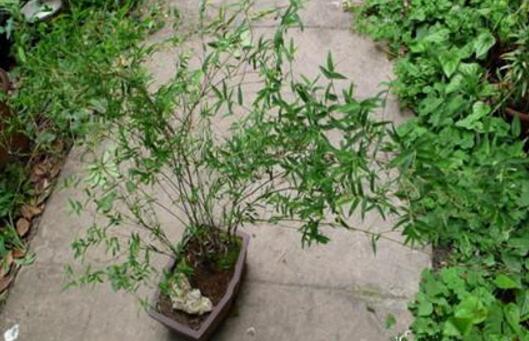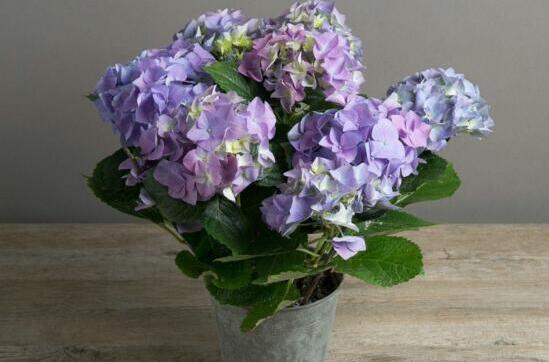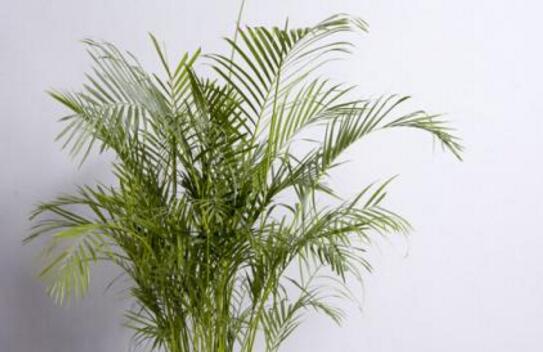How often is the Phoenix tail bamboo watered, and the season / indoor and outdoor watering time is different.
Everyone may have their own unique habits when planting Phyllostachys pubescens, but if you want to raise it well, you must have a scientific method of cultivating it, and watering is a key step. How often do you water it? What kind of water should be used to water the Phoenix tail bamboo? Wait, these are all questions that we should know.
How often is the Phoenix tail bamboo watered?
1. According to seasonal changes
1. Spring

The temperature in spring is moderate, so the growth rate of Phyllostachys pubescens is the fastest in this season, so how often is it watered in spring? Generally irrigate once every 3 days or so to ensure that the soil is slightly moist and can be watered later and earlier according to the situation of the basin soil.
Note: the Phoenix tail bamboo should be watered thoroughly when it is planted, and then it can be watered normally according to the moist condition of the soil, do not let stagnant water appear in the basin, and do not be short of water for a long time, otherwise the leaves will bend and have no luster.
2. Summer
In summer, because of the hot climate, the soil dries faster than other times, and the frequency of watering is also a little more than other times, usually once a day or two, and the watering time is best in the morning. it ensures that most of the water is absorbed rather than evaporated.
Note: in order to ensure that the water can be absorbed by the roots, the drainage and air permeability of the soil should be ensured, so that the irrigated water can reach the lower part of the soil, otherwise it is easy to cause stagnant water and cannot be watered through.
3. Autumn
The temperature in autumn is the same as that in spring, so how often is the Phoenix tail bamboo watered in autumn? Also watering once every 3-4 days, you can spray water to the leaves properly to maintain the humidity around the plant.
4. Winter
Phyllostachys pubescens is generally insulated in winter, but at this time the growth of Phyllostachys pubescens is relatively slow, and the water requirement is low, so it is not appropriate to water too much, generally watering once a week or so, you can see whether the soil is dry and watered.
Note: the best choice for watering in winter is at noon. When watering, we must pay attention to observe the soil moisture, not too much watering, otherwise it will cause frost injury of Phoenix tail bamboo.
Second, according to climate change
1. Outdoor
If Phyllostachys pubescens is planted outdoors, watering can be reduced or even not watered on rainy days, which has nothing to do with the season, but if it is sunny, it is necessary to choose the watering time according to the soil moisture.
2. Indoor
If Phyllostachys pubescens is planted in pots, the general watering method is based on seasonal changes and pot soil moisture, the method can be the same as the four seasons watering method.
What kind of water should be used to water the Phoenix tail bamboo?
The most suitable water for Phoenix tail bamboo is Rain Water, followed by well water, river water and so on. Tap water can also be used, but if the alkalinity is too high, it may be left for a few days before use.
How to raise Phyllostachys pubescens 1. Soil
Phyllostachys pubescens likes acidic, slightly acidic or neutral soil, and the family pot can choose the mixed culture soil of rotten leaf soil, garden soil and river sand, and avoid heavy and alkaline soil.
2. Sunshine:
Phoenix tail bamboo happy light, indoor maintenance in spring, summer, autumn three seasons near the south windowsill ventilation, where there is plenty of sunshine in winter, it can grow well. If put outdoor culture, spring, autumn season can receive more light, summer should pay attention to shading, avoid strong light exposure, otherwise branches and leaves are easy to yellowing, affecting beauty.
3. Temperature:
Phyllostachys pubescens is an evergreen tufted shrub. Like warm, humid and semi-overcast environment. Poor cold resistance, not resistant to strong light exposure, afraid of waterlogging, suitable for fertile, loose and well-drained loam. The temperature in winter is not lower than 0 degrees.
4. Watering:
Watering should be appropriate during the growth period and keep the basin soil moist. The leaves should be sprayed with clean water frequently in dry and hot summer seasons to keep the leaves green.
5. Fertilization:
During the growth period, Phyllostachys pubescens needs to apply liquid fertilizer every 20 days. Phyllostachys pubescens fertilizer is mainly organic fertilizer, liquid fertilizer can be used mature thin bean cake water, or compound liquid fertilizer. Fertilization should be stopped in winter.
6. Pruning:
The old pole of Phyllostachys pubescens gradually withered in the process of growth, and should be cut off in time to maintain a graceful posture.
Matters needing attention in Phyllostachys pubescens culture 1. Soil selection
The pot soil of Phyllostachys pubescens is more suitable to be made of fertile and loose, humus-rich rotten leaf soil, mature pastoral soil on the surface of vegetable land, mixed with appropriate amount of sandy soil. The coarse sand of the basin bottom cushion and the application of rotten cake scraps as the base fertilizer and good water permeability are beneficial to the development of whip root and the growth of branches and leaves.
2. Fertilization method
Phyllostachys pubescens also needs fertilization, especially a large number of cultivation in the courtyard, to apply a good base fertilizer, cultivation, you can use barnyard manure, bone powder, soil fertilizer, pond mud mixture, fill the bottom of the basin or choke in autumn and winter. This not only increases the effective fertility and soil temperature of the soil, but also is very good for new bamboo shoots. Phoenix tail bamboo bonsai, in the growing season can be used urea, potassium dihydrogen phosphate and other quick-acting fertilizers, prepared into 0.3% of the nutrient solution, applied in the basin, for its growth needs, the best effect.
Organic fertilizer is applied once a season, and compound fertilizer can be applied thinly once a month in the peak growing season to make the leaves green. During the growing period, we should also pay attention to loose soil. Apply thin and rotten cake fertilizer and water several times. It is necessary to apply wind chemical fertilizer or miscellaneous fertilizer in early winter to improve soil structure and facilitate the growth and development of bamboo whip.
3. Watering method
Phyllostachys pubescens should be watered properly during the growing period, keep the basin soil moist, water should be watered half-dry, not stagnant water, spray water on branches and leaves in summer, reduce water in winter, water once every 4-5 days, and keep it in a sunny place.
Water is an important factor for the vigorous growth of Phyllostachys pubescens. The nutrients applied to the soil must be dissolved in water before they can be absorbed by Phyllostachys pubescens. Therefore, water is needed in the four seasons of the year; in spring, the branches and leaves of potted Phyllostachys pubescens begin to sprout, and to ensure the need for water, they can be watered every 2 days; in summer, they are watered in the morning and evening. In autumn and winter, you can reduce the watering times and dosage as appropriate, water once before winter, and keep the basin soil moist after that. Potted Phoenix tail bamboo, the principle of watering must be thoroughly, can not be watered "waist cut off water", otherwise affect the growth.
After potted plants, pay attention to shade and keep the basin soil moist, and often spray foliar water to prevent bamboo leaves from being rolled up because of dryness. But it should not be too wet and rot the roots. In the period of prosperous growth and high temperature in summer, in addition to watering in the morning and evening, foliar water should be sprayed several times. At the same time, it is necessary to build a shed for shade to prevent strong light exposure.
4. Light and temperature requirements
Phyllostachys pubescens likes to be warm and humid, leeward and sunny. The sun can be placed in spring and late autumn, and the sun is strong in early autumn in summer. Phyllostachys pubescens should be placed in the shade or in the place where the sun can be seen in the morning and evening, and it is better to put it next to the pool and ditch. To enter the house for the winter, the room temperature is about 8 ℃. When it is cold in winter, you should move indoors to overwinter, and the indoor temperature should not be lower than 5 ℃.
5. Pest control
The common diseases are rust and leaf blight. Rust can be sprayed with 500,600 times of 80% Dysen zinc wettable powder, and leaf blight can be sprayed with 1000 times of 70% methyl topiramate wettable powder. In addition, aphids and golden needles are harmful. Aphids can be sprayed with 1500 times of 80% dichlorvos emulsion or 1000 times of malathion. Golden needles can use 1000 times of 5% parathion to irrigate roots in early spring to kill adults or larvae.
- Prev

What to do when hydrangea wilts? Increasing water, proper shade/environmental mutation is the main cause.
Hydrangea, as its name suggests, is a long flower like hydrangea, which is brightly colored and loved by flower friends. However, in the breeding process, many flower friends will encounter some problems, such as wilting, then hydrangea wilted how to do? At this time, we can not rush, but should find the cause, and then solve
- Next

How to prune Phyllostachys pubescens, its pruning method / thinning / truncation / styling
We know that in the efficacy and function of Phyllostachys pubescens, its main function is to watch, and if we want to maintain its charm, we must make its branches dense and uneven, which requires us to pay more attention to pruning. So how to prune it? Let's take a look at the pruning methods of Phoenix tail bamboo.
Related
- Fuxing push coffee new agricultural production and marketing class: lack of small-scale processing plants
- Jujube rice field leisure farm deep ploughing Yilan for five years to create a space for organic food and play
- Nongyu Farm-A trial of organic papaya for brave women with advanced technology
- Four points for attention in the prevention and control of diseases and insect pests of edible fungi
- How to add nutrient solution to Edible Fungi
- Is there any good way to control edible fungus mites?
- Open Inoculation Technology of Edible Fungi
- Is there any clever way to use fertilizer for edible fungus in winter?
- What agents are used to kill the pathogens of edible fungi in the mushroom shed?
- Rapid drying of Edible Fungi

